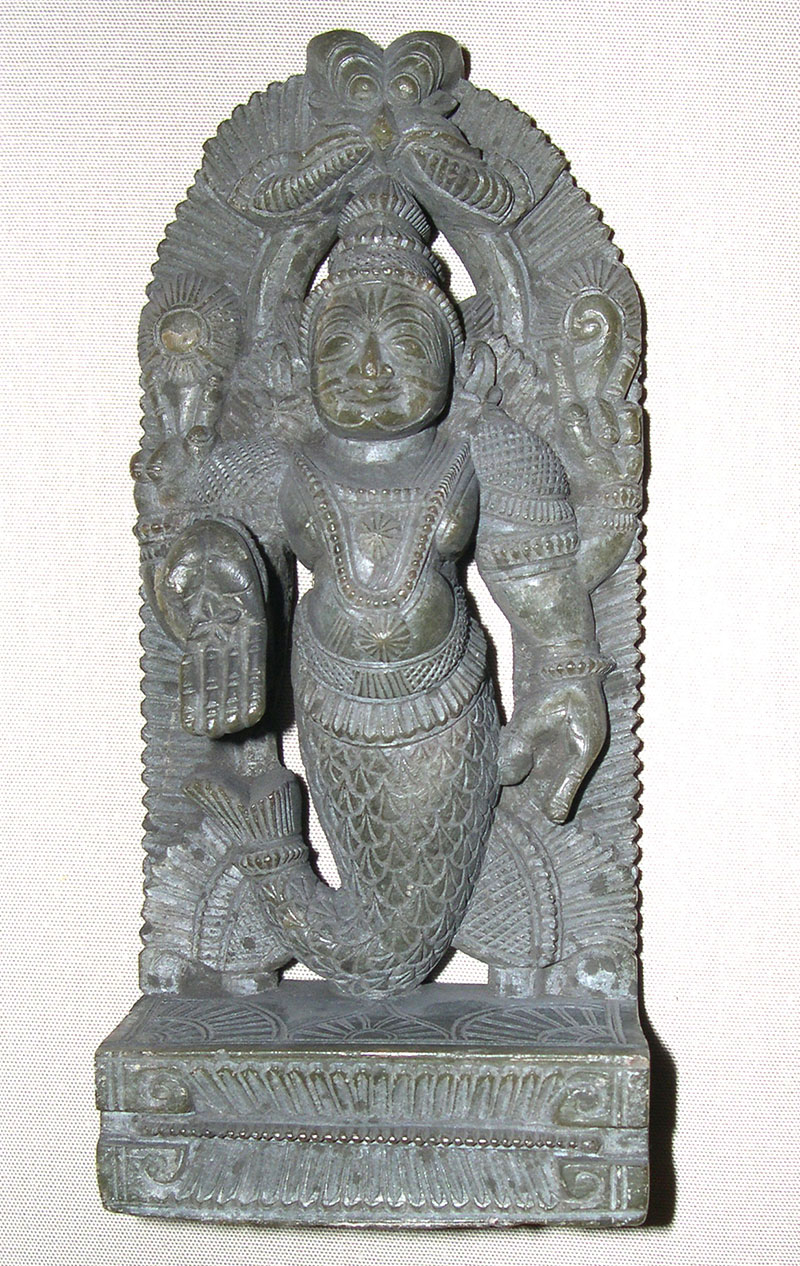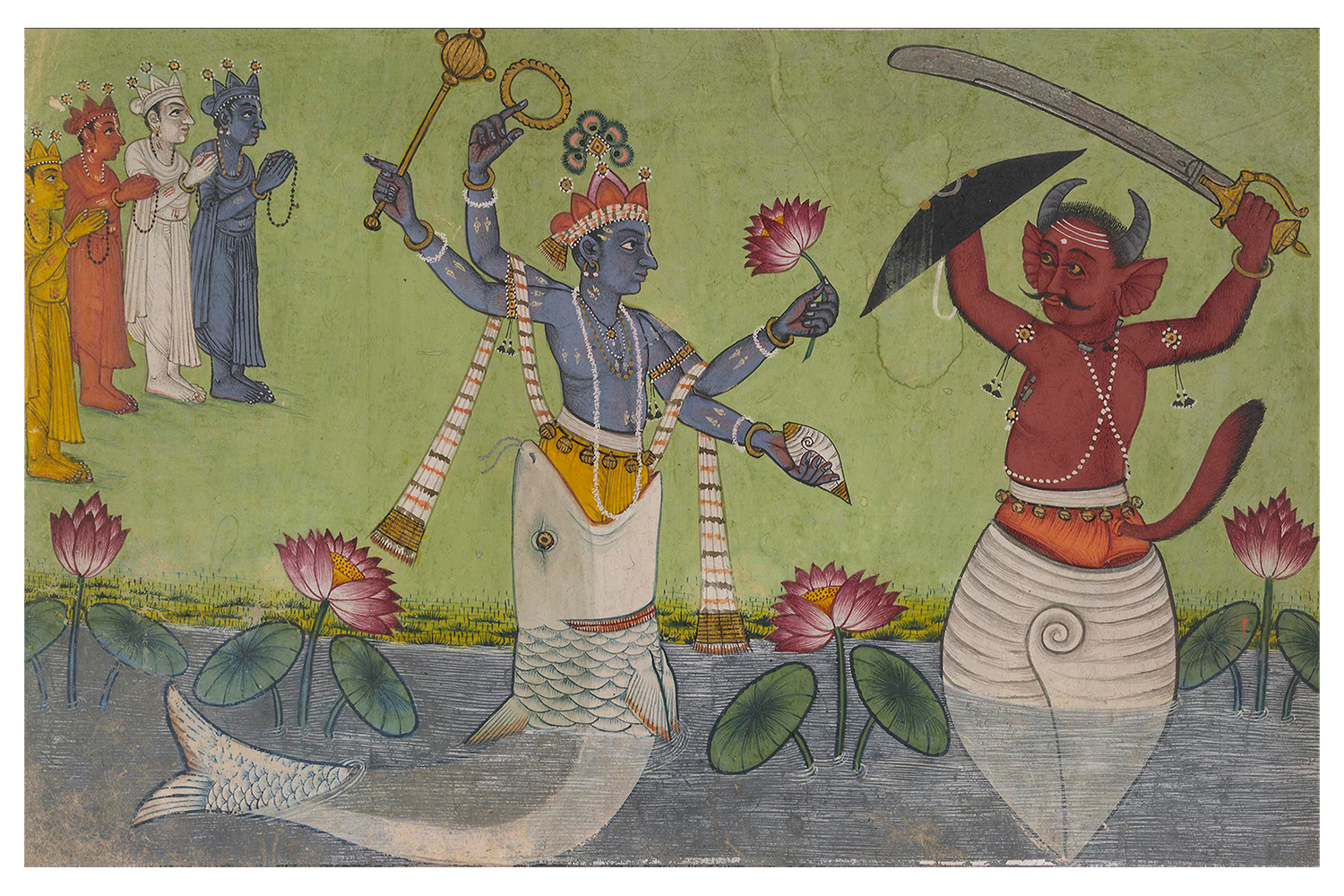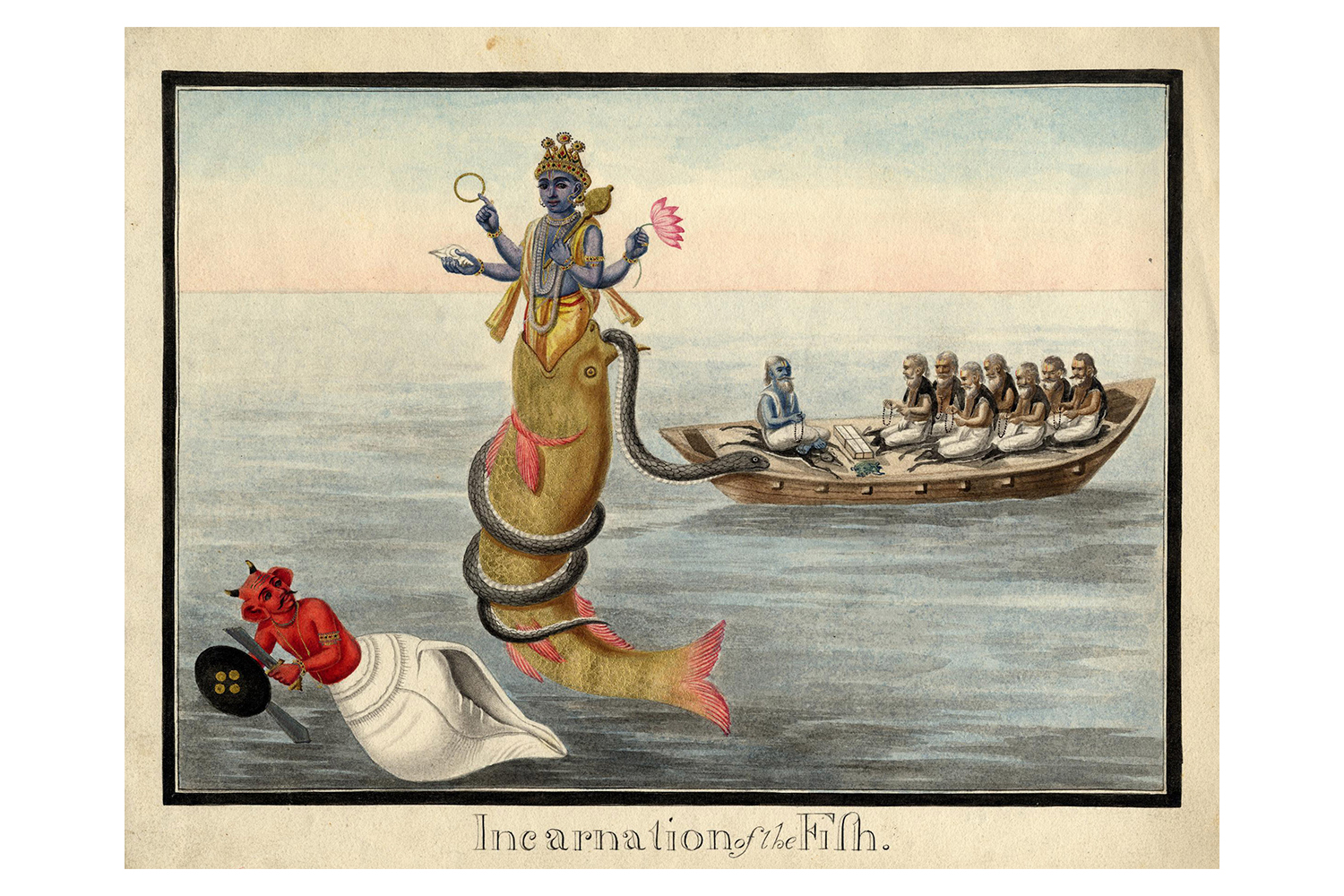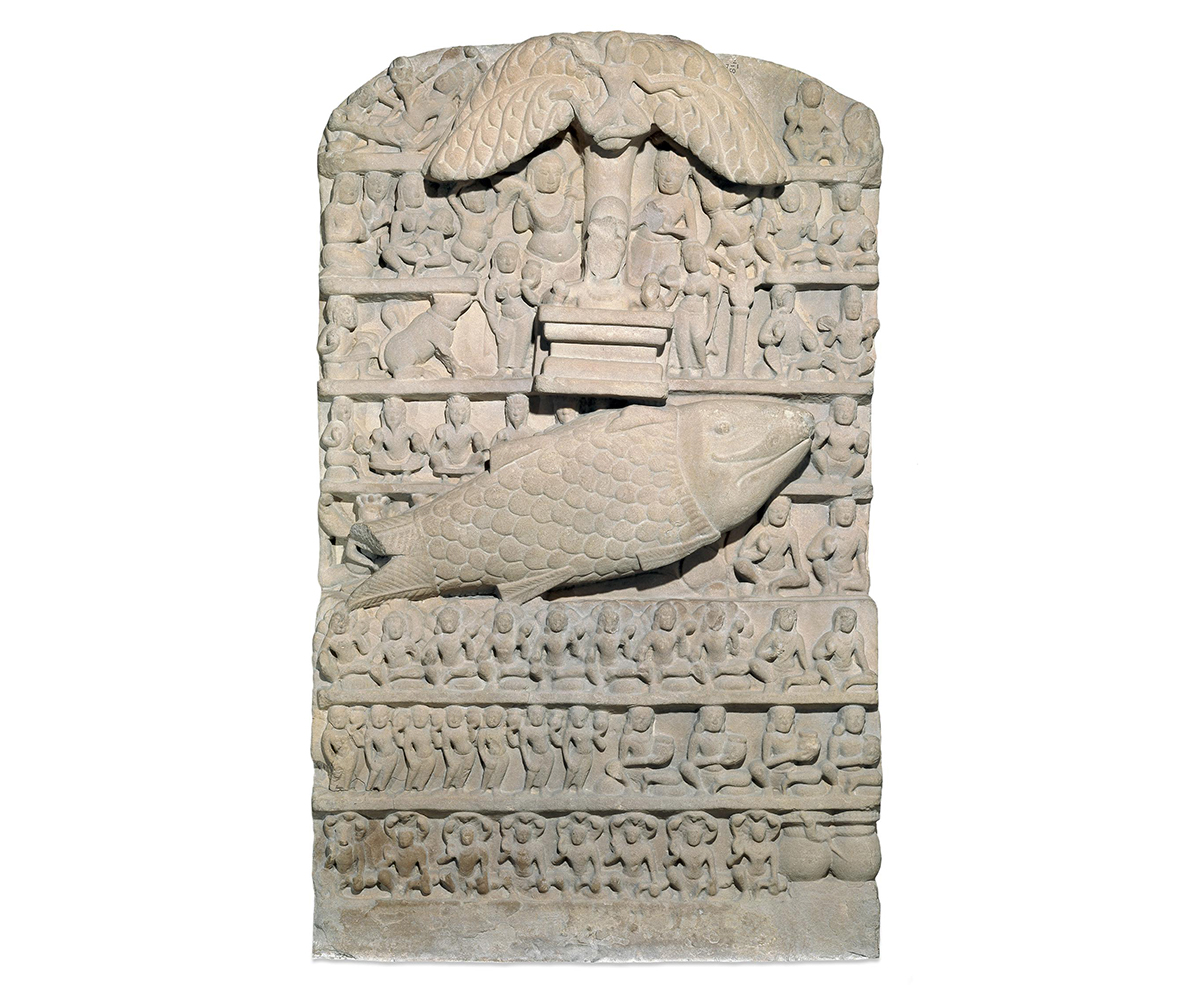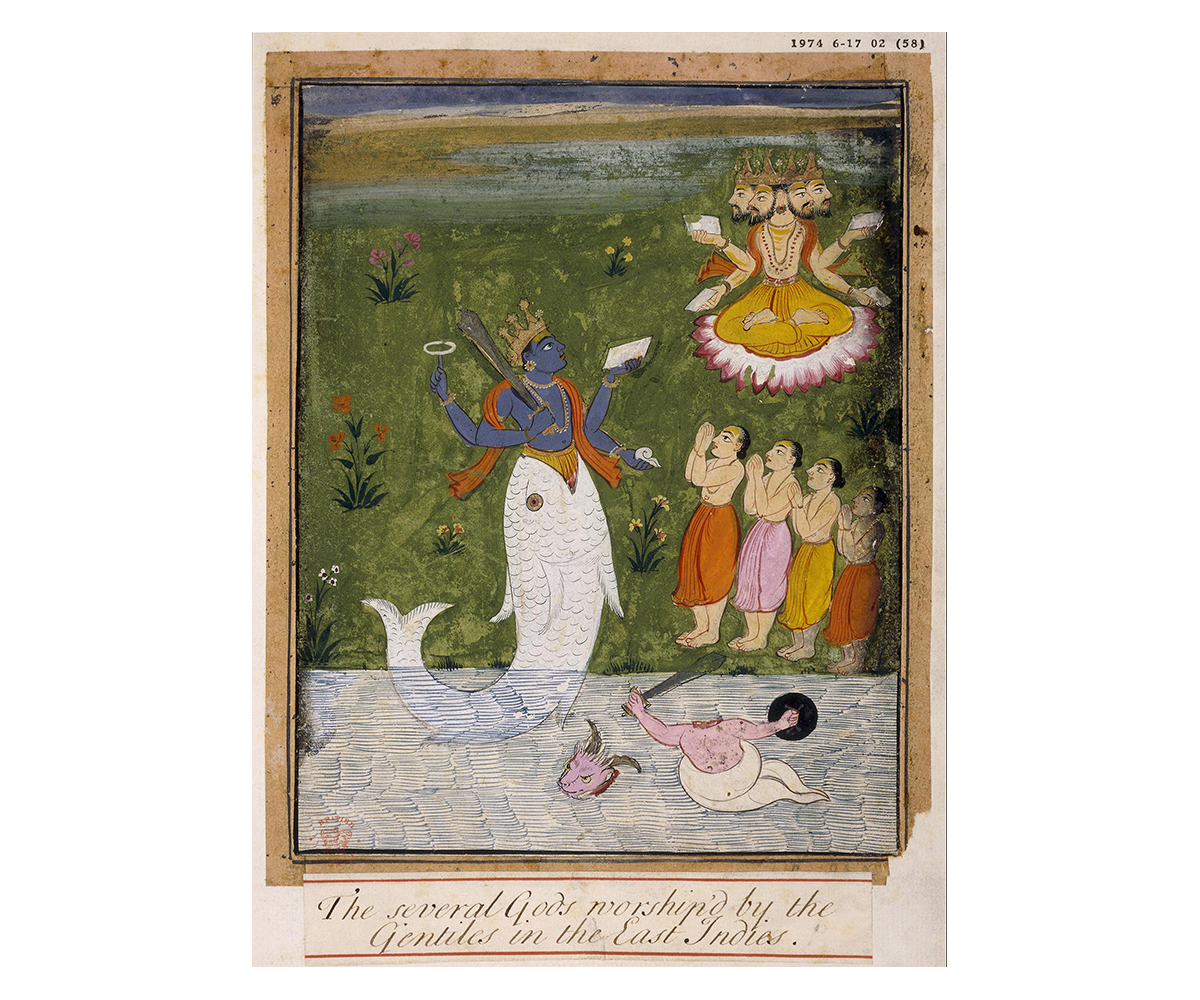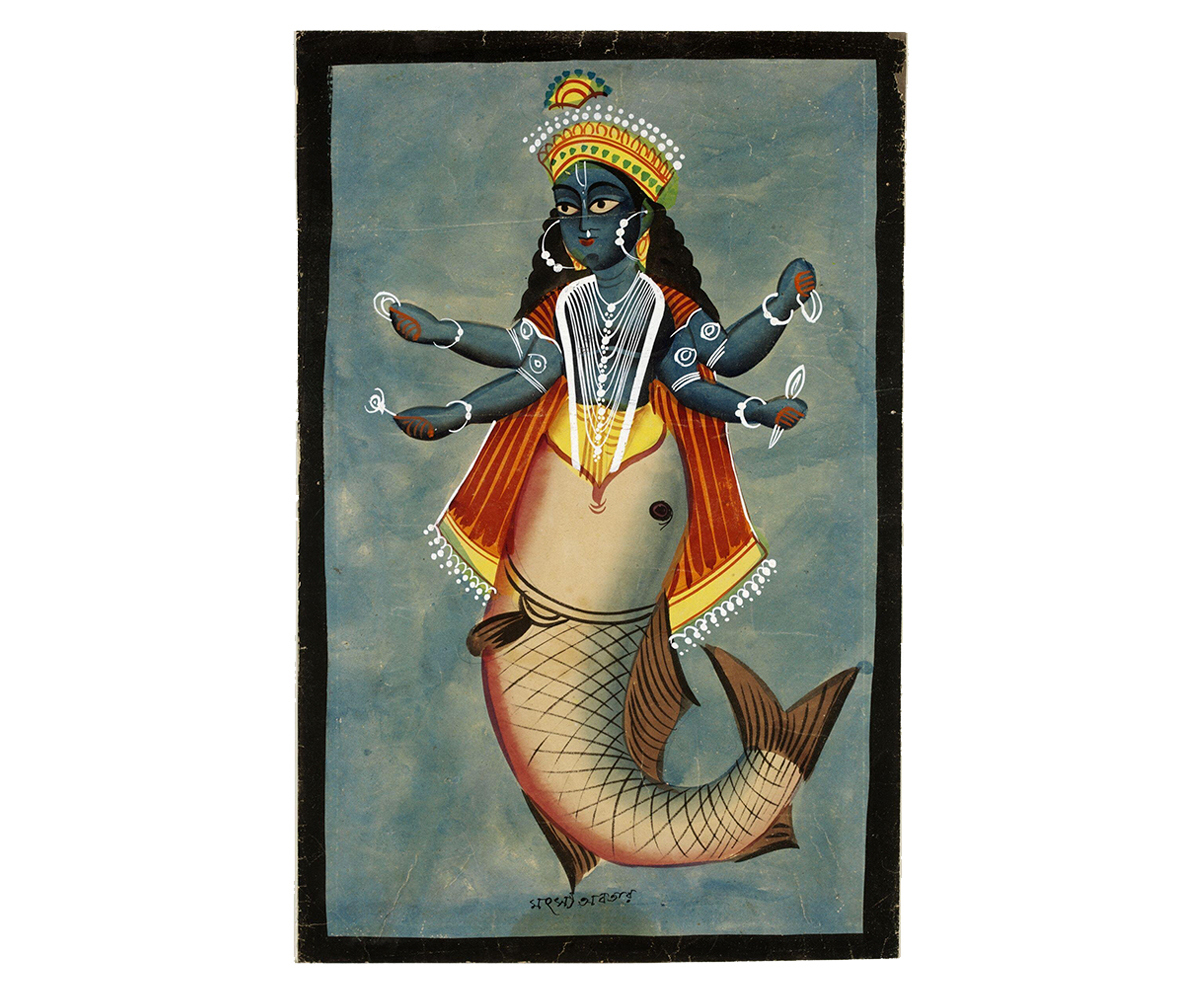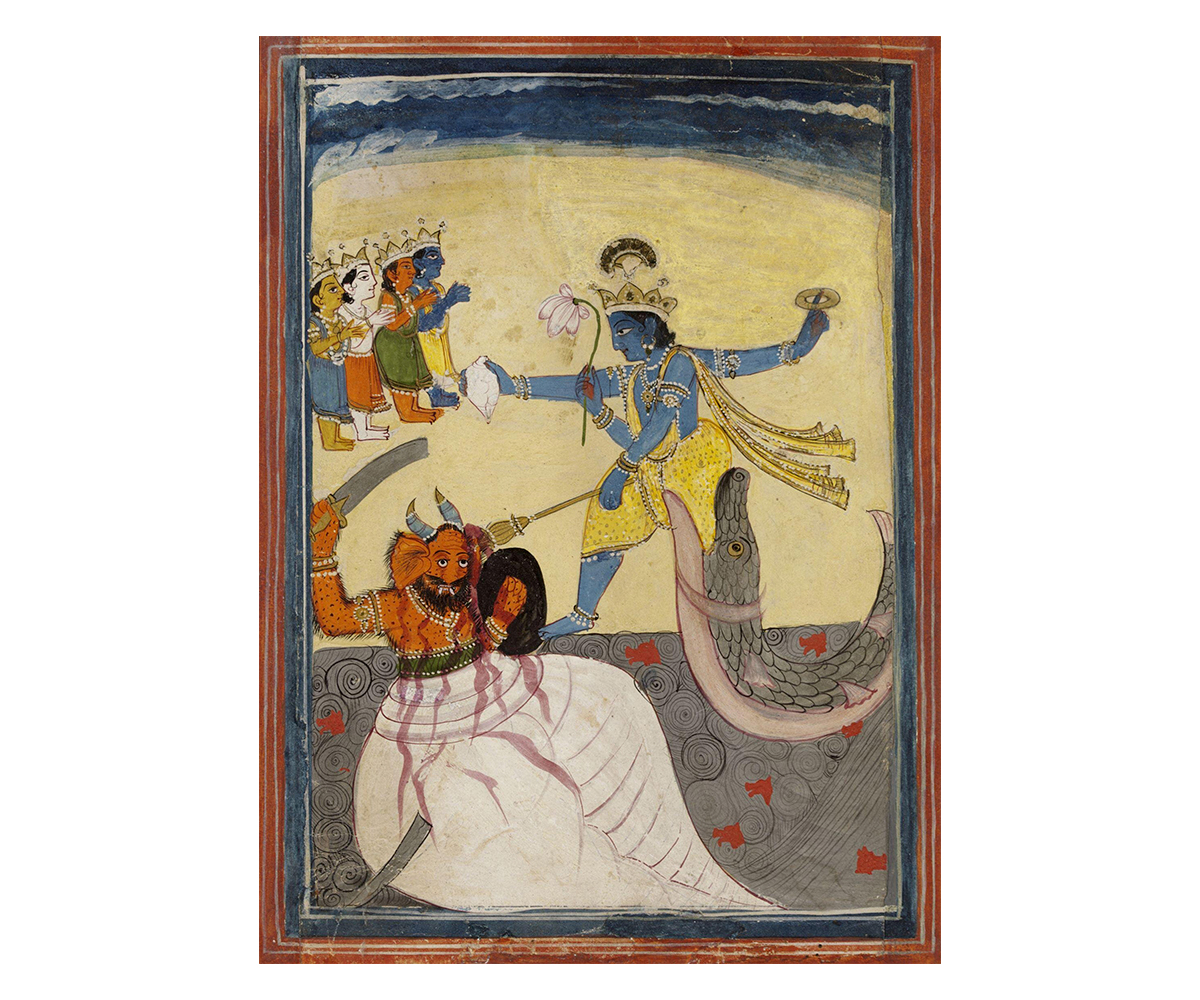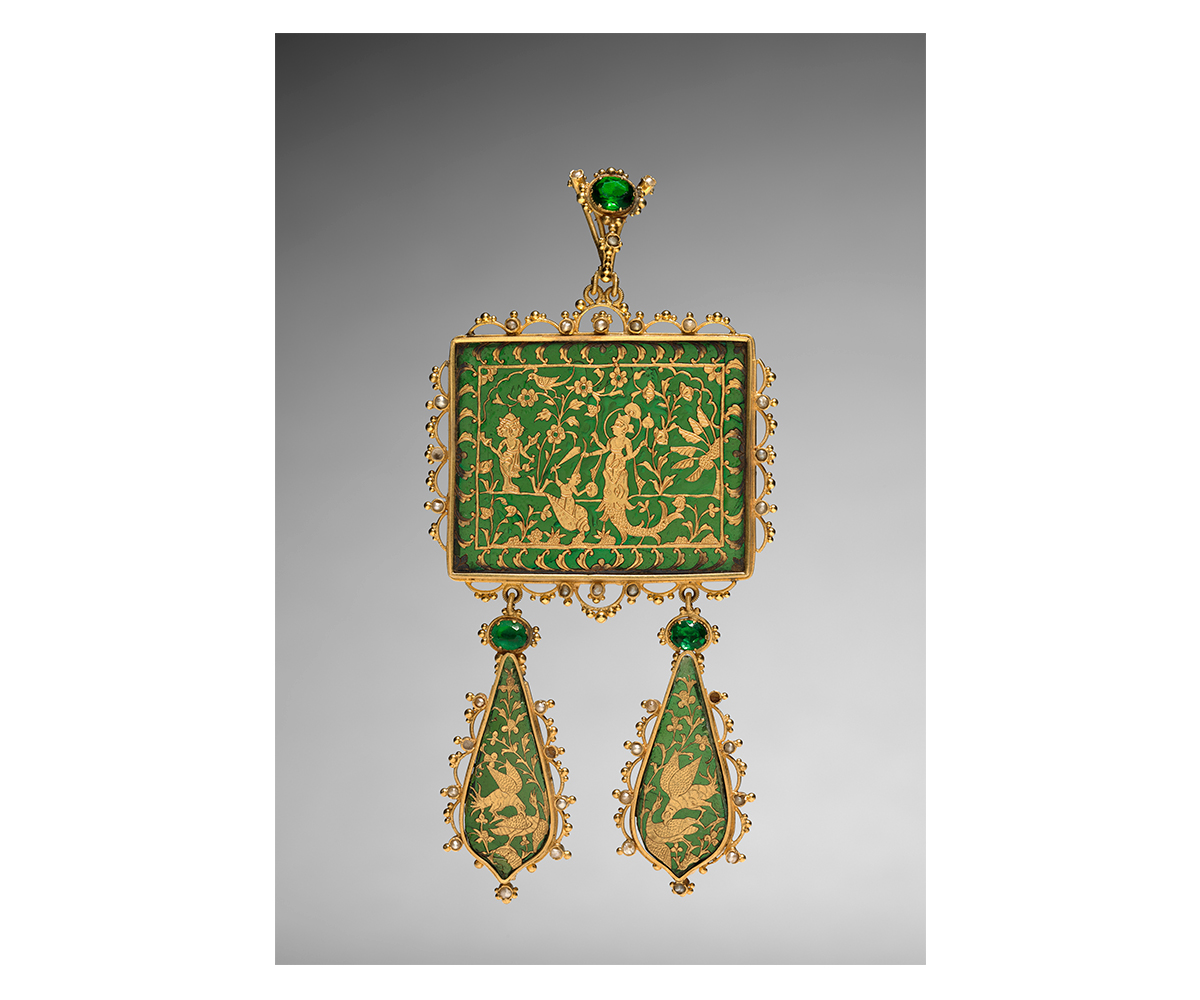ARTICLE
Matsya
A variant of this legend is found in the Agni Purana. While making divine offerings in a river, Manu is surprised to hear a small fish who has leapt into his cupped hands plead with him not to return it to the river as it is full of predators. Manu fulfils the creature’s request and places it in a jar. The fish then begins to grow, leading Manu to throw it in a pond. When it continues to get bigger, Manu throws it into a lake, and finally, the fish is so large it must be moved to the sea. Upon landing in the sea, the fish becomes enormous, and Manu can no longer doubt that it is an incarnation of Vishnu himself. Matsya then tells Manu that seven days hence, the earth will be overcome by a catastrophic flood. He instructs Manu to collect a variety of seeds and gather the seven rishis and their wives to board a boat that will come for them, and to attach the boat to the fish’s horn using a snake. When the foretold flood arrives, Manu and the seven rishis board the boat and connect it to the fish’s horn. Vishnu then recites the Matsya Purana to Manu, after which he kills Hayagriva for his attempt to steal the Vedas.
Iconographically, the image of Matsya is commonly depicted either as an entire fish or as a hybrid creature with a human head and torso and the bottom half of a fish. The figure has four arms, two of which carry Vishnu’s symbols, the Sudarshan Chakra, a discus, and the shankha, a conch shell, while the other two assume the boon-bestowing varada mudra and the reassuring abhaya mudra. The human half of the Matsya avatar representation is also adorned with jewellery and a tall cap, the kirita-makuta. Matsya in the complete fish form is depicted as the central figure in a ninth- or tenth-century CE sandstone stele from Central India. The stele portrays the narrative scene of Matsya carrying a shrine to safety while saving Manu, the Vedas and the rishis.
The Matsya avatar in the hybrid form is typically depicted along with the other Dashavatara; while rare specimens of Matsya images as a complete fish have been found, it is unknown whether such images were created alongside those of other Dashavatara. Temples dedicated to Matsya are few and largely restricted to South India — the best known are the Matsya Narayana temples in Nagalapuram, Andhra Pradesh; Chennai, Tamil Nadu; and Bellary, Karnataka.
Bibliography
Banerjea, Jitendra Nath. The Development of Hindu Iconography. New Delhi, India: Munshiram Manoharlal Publishers Pvt. Ltd., 2016.
The British Museum. “Sandstone Stele Depicting Matsya.” Google Arts & Culture. Accessed August 17, 2023. https://artsandculture.google.com/asset/sandstone-stele-depicting-matsya/hQHPykYIZlvW1w.
Dallapiccola, Anna L. Dictionary of Hindu Lore and Legend. London: Thames & Hudson Ltd, 2014.
Doniger, Wendy. The Hindus: An Alternative History. 2nd ed. New Delhi: Speaking Tiger, 2015.
Gupte, R. S. Iconography of the Hindus, Buddhists and Jains. D. B. Taraporevala Sons & Co. Private Ltd., 1972.
Rao, T. A. Gopinatha. Elements of Hindu Iconography. Vol. 1.1. Madras: The Law Printing House, 1914.




